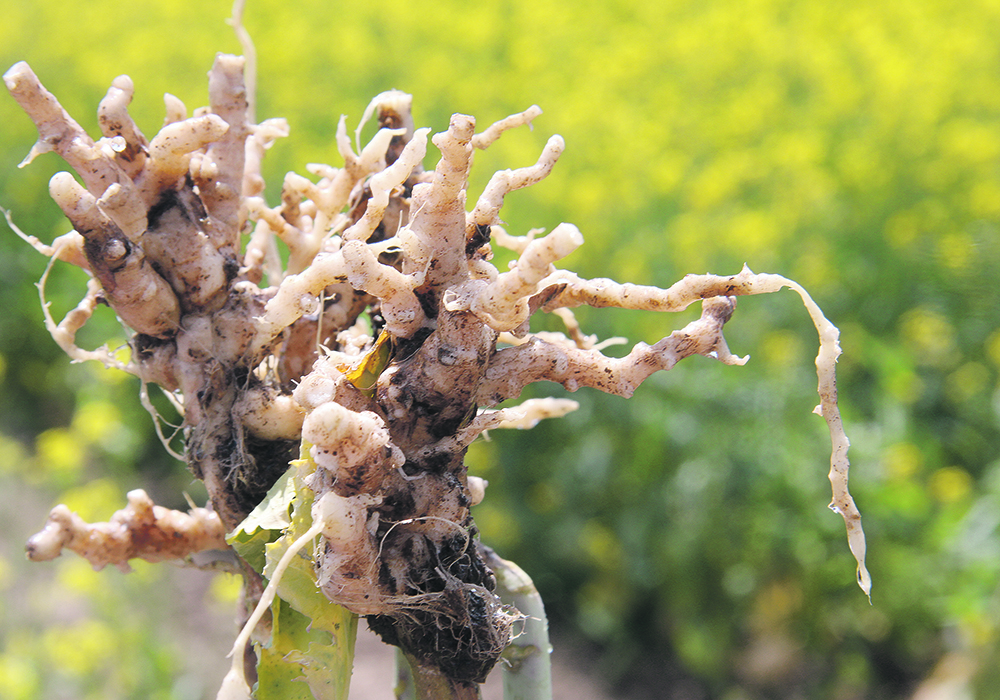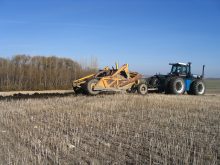Biocontrols for clubroot are explored as resistant varieties fail and chemical controls remain unavailable
When Crop Aid Nutrition approached Sheau-Fang Hwang to test their product’s effect on clubroot in canola, she tried to dissuade them — virtually any other crop disease would be a better target.
“I said, ‘you choose a very tough pathogen to work with,’” she said. “If you choose some other soil-borne pathogen, like Fusarium, it’s much weaker, number one, and number two, this pathogen only attacks canola when it is at a young stage.”
“Clubroot spores are different. Clubroot can infect the canola plant through the whole growing season.”
Read Also

Gap in emission regulations hamstrings Canadian hybrid truck manufacturer
A B.C. company building hybrid engines for heavy trucks says they have the opportunity to build something leading edge in Canada, but our own laws are stopping them from doing it.
Hwang, a professor of applied plant pathology at the University of Alberta, is an expert on the disease. Together with her colleague Stephen Strelkov, she has helped create much of the latest knowledge on clubroot in Canada.
The product in question, Crop Aid Plus, is promoted by the Saskatoon-based company as a fertilizer and stimulant for beneficial soil micro-organisms.
Hwang said companies don’t share specific formulations with her team due to intellectual property restrictions.
Crop Aid Nutrition describes their product as containing various micronutrients such as zinc and boron as well as “lignin extract” and “kelp extract.”
One of the company’s claims is that the product reduces the prevalence of clubroot. It was this that the company wanted Hwang to explore. The greenhouse trial she and her team conducted in 2020 showed a reduction in clubroot disease severity by up to 31 percent. Plants grew larger and clubroot galls were smaller.
While the results are intriguing, Hwang notes much more research would be needed to confirm effectiveness in the field and just how the product works.
Crop Aid Nutrition’s strategy is to work with the soil itself, something Hwang said may be the most promising approach against a disease with few other options such as chemical control or crop resistance.
“Their idea is simply, ‘let’s feed more food to these good, beneficial micro-organisms, make them happy,’” Hwang said. “So, they have to compete for nutrients and therefore suppress the pathogen. This is the whole concept behind biocontrol.”
“If the surface of roots of the canola are already colonized by good soil microbes, occupied by all these good soil micro-organisms, the bad ones have no route to go in.”
Traditional approaches, such as sprays and resistant varieties, have been of little help.
This is because clubroot is an entirely different organism, said Yangdou Wei, a plant pathologist the University of Saskatchewan.
“This disease is one of the most complicated in plant pathology, compared to all the diseases we know in the world,” he said. “It is a completely different pathogen.”
Clubroot is caused by the micro-organism Plasmodiophora brassicae, which is neither fungus, bacteria, virus, nor nematode but a protist — not closely related to any of these. Once arriving in a field, usually via contaminated farm equipment, the protist can remain in the soil and infectious for 20 years or more. Typically, the most infectious soil is found near field entrances.
Wei explained that when P. brassicae invades a canola plant, it sets up shop right inside the cells, where it integrates itself so tightly with plant’s own workings that they can’t easily be distinguished from one another.
“To make a biochemical treatment, like a fungicide treatment, is almost impossible,” he said.
With more than 30 different strains, or pathotypes, and researchers still identifying more, clubroot is also extremely adaptable. While some canola-resistant varieties came on the market in 2013, Hwang said these have quickly become ineffective as the micro-organism reacted.
Since it was first detected in central Alberta in 2003, clubroot has spread, with some instances showing up as far away as Saskatchewan and Manitoba.















